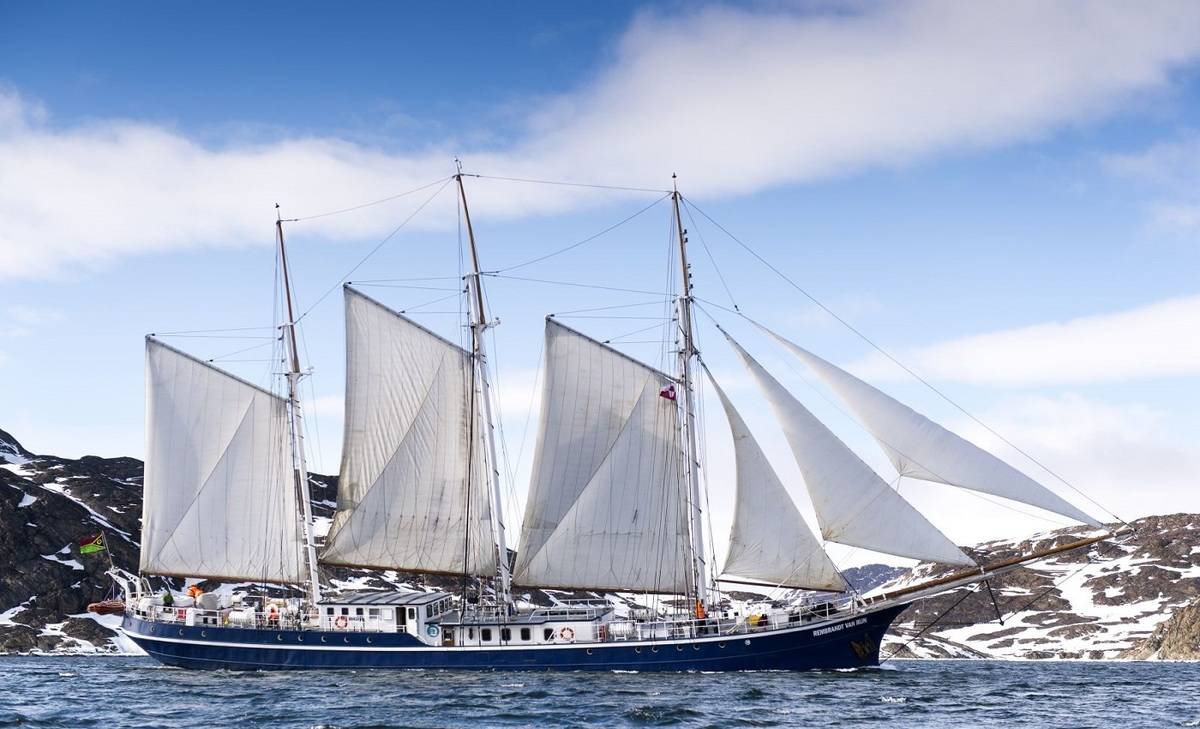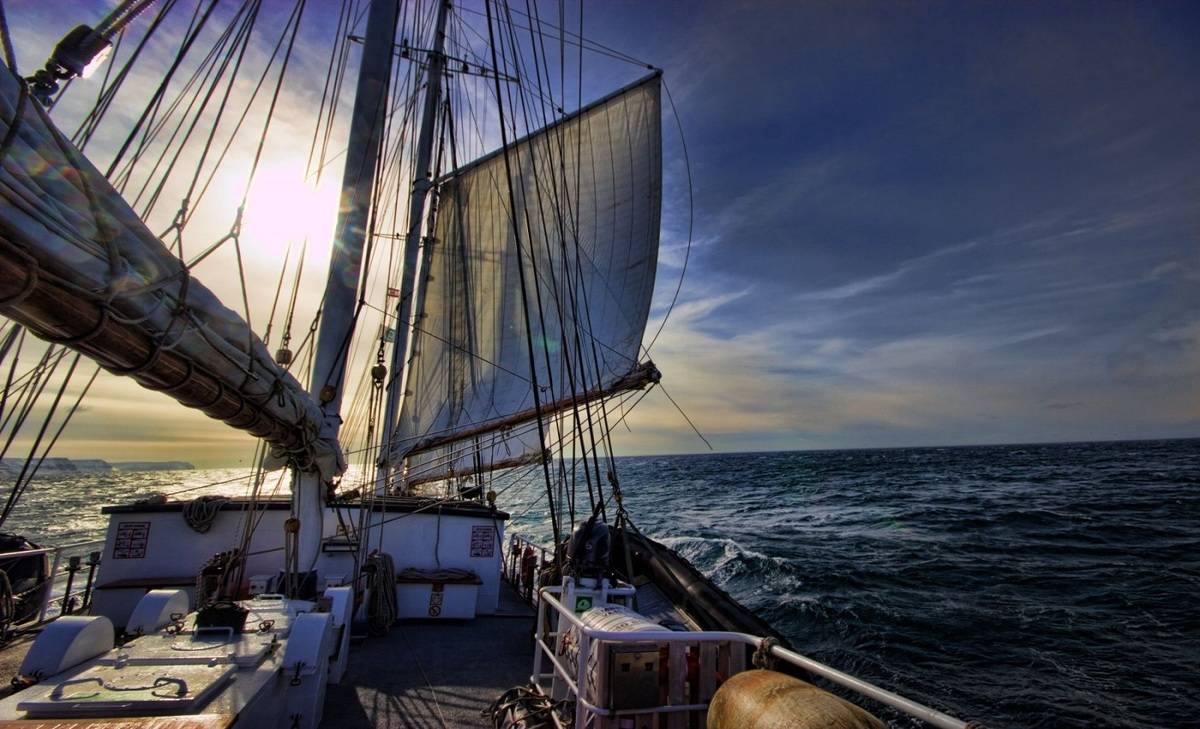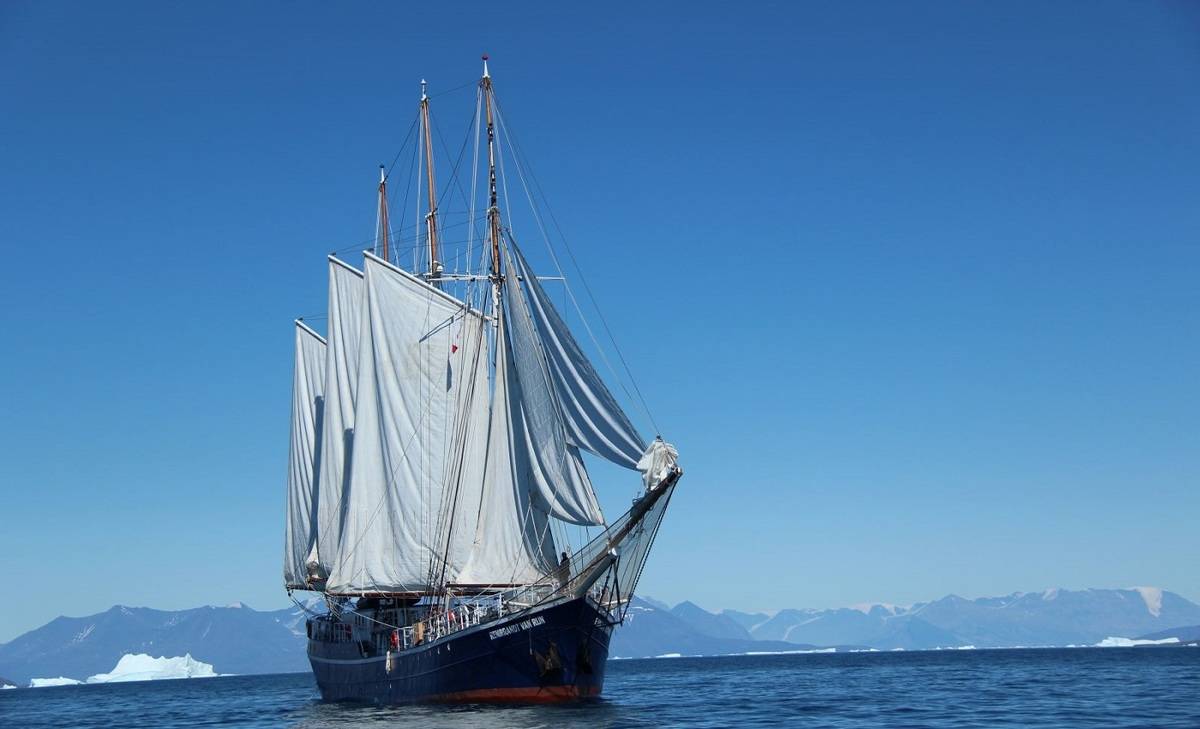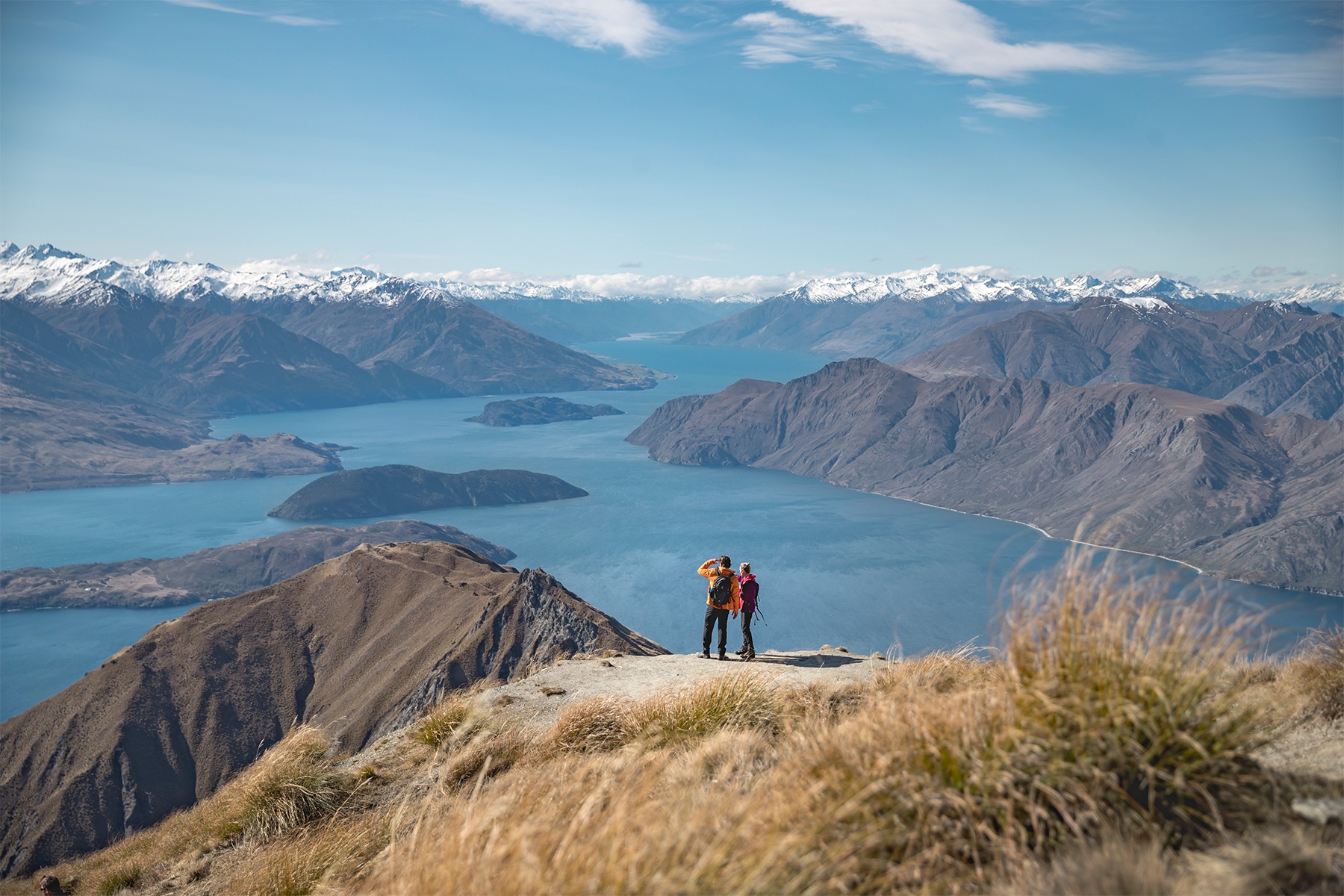North Spitsbergen - Arctic Summer
11 Days - Rembrandt Van Rijn
The North Spitsbergen cruise sails to some of the remotest locations of northern Europe. The expedition gives you the opportunity to spot historic whaling remains, glaciers, a variety of Arctic birds including the Little Auk, and polar bears.
from NZD $9825pp

Home » 11 Day Rembrandt Van Rijn: North Spitsbergen – Arctic Summer
Itinerary Highlights
- A chance to spot polar bears, bearded seals, seabird colonies
- Discover the history of Spitsbergen, the mining industry and polar exploration
- Explore the majestic cliff of Tempet with spectacular mountains
Itinerary in Brief
- Day 1: Largest town, biggest island
- Day 2 - 10: North Spitsbergen
- Day 11: There and back again

Day 1: Largest town, biggest island
You touch down in Longyearbyen, the administrative center of Spitsbergen, the largest island of the Svalbard archipelago. Enjoy strolling around this former mining town, whose parish church and Svalbard Museum make for fascinating attractions. Though the countryside appears stark, more than a hundred species of plant have been recorded in it. In the early evening the ship sails out of Isfjorden, where you might spot the first minke whale of your voyage. In the evening you sail for Trygghamna, where you see the remains of a 17th-century English whaling station and 18th-century Pomor hunting station, both of which you can visit the next morning.
Day 2 - 10: North Spitsbergen
Foxes, seabirds, and grazing reindeer
From Trygghamna you walk to Alkhornet, a large seabird cliff where the birds are scouting out breeding places. Below the cliffs is a common place to spot Arctic foxes, and you may also see reindeer grazing on the lush vegetation if there’s not too much snow.
Remains of the whalers
You sail into Fuglefjorden amid views of Svitjodbreen and Birgerbukta, both breeding areas for great skuas as well as likely spots to see a polar bear. The aim is to visit Ytre Norskøya, a small island that served for many years as a Dutch whaling lookout. Here you can still follow the whalers’ tracks to the summit of the island, passing popular bird cliffs on the way. On shore are the remains of more 17th-century blubber ovens, while Arctic skuas and common eiders breed among the graves of some two hundred Dutch whalers.
Glaciers and Raudfjord geology
Raudfjorden, on the north coast of Spitsbergen, is a fine place for gazing over the glaciers. It’s also a favorite hangout for ringed and bearded seals, colonies of seabird, and the occasional polar bear and beluga whale. Alicehamna and Buchananhalvøya are fine places for gazing over the geology of the land.
Wide open tundra
If ice conditions permit, you may land on the northern side of Graahuken, an extensive tundra area of Spitsbergen, and walk from there to Hyttesletten. The plain is a popular grazing area for reindeer, and several species of waders also breed here. Similarly, the lakes afford you a good chance of spotting red- throated divers and king eiders.
Monaco Glacier
Depending on the weather and sea ice, we could sail into Liefdefjorden, land at Texas Bar and cruise within sight of the 5-kilometer-long (3.1 miles) face of Monaco Glacier. The waters in front of this precipitous glacier are a favorite feeding spot for thousands of kittiwakes, and the base of the ice is a popular polar bear hunting ground. If ice conditions prevent us from sailing here early in the season, we may sail along the west coast of Spitsbergen.
On to the little auks
You then sail south to Magdalenafjorden, one of the glacier-filled highlights of Spitsbergen. A shore visit at Gravneset shows you the remains of 17th-century English whaling, and you can also see large colonies of little auks.
Earth’s northernmost community
You head north for Kongsfjorden and Krossfjorden. We aim to visit places of historic interest: Ny London, where you can see the remains of early 20th-century marble mining, and Ny Ålesund, the northernmost community in the world. There are also research stations and the famous anchor mast of the dirigible Norge, which took the first flight across the North Pole to Nome, Alaska in 1926. Krossfjorden offers views of colossal glaciers and lofty mountain peaks.
Walruses ashore
On your journey south, the goal is a landing in Forlandsundet at Sarstangen, a walrus haul out. Alternatively you could land on the coast of Engelskbukta. The tundra here is a fine place for a walk to Hornbaekbukta. Also at Poolepynten is a walrus haul out.
Wide tundra, towering mountains
The next stop is Bohemanflya, an expansive tundra with its own avifauna (depending on when spring arrives) and spectacular geological formations along the coast. In Gipsvika you can go on shore near Templet, a mountainous location of eroded sedimentary rock from the Upper Carboniferous period – around 290 million years ago.
Day 11: There and back again
Every adventure, no matter how grand, must eventually come to an end. You disembark in Longyearbyen, taking home memories that will accompany you wherever your next adventure lies.
| Dates | Cabin | From | Special Offer |
|---|---|---|---|
| 15 Jun 2026 - 25 Jun 2026 | NZD $9825pp | ||
| Triple Private Porthole | NZD $9825pp | Contact us | |
| Twin Private Inside Cabin | NZD $10526pp | Contact us | |
| Twin Private Porthole Cabin | NZD $12281pp | Contact us | |
| 25 Jun 2026 - 05 Jul 2026 | NZD $9825pp | ||
| Triple Private Porthole | NZD $9825pp | Contact us | |
| Twin Private Inside Cabin | NZD $10526pp | Contact us | |
| Twin Private Porthole Cabin | NZD $12281pp | Contact us | |
| 05 Jul 2026 - 15 Jul 2026 | NZD $9825pp | ||
| Triple Private Porthole | NZD $9825pp | Contact us | |
| Twin Private Inside Cabin | NZD $10526pp | Contact us | |
| Twin Private Porthole Cabin | NZD $12281pp | Contact us | |
**Prices are per person based on twin / shared accommodation.
**Single supplements may apply
Cabin Details
Triple Private Porthole
One porthole window, one upper/lower berth, one lower berth, private shower and toilet, and ample storage space.
Twin Private Inside Cabin
One upper/lower berth, private shower and toilet, and ample storage space.
Twin Private Porthole Cabin
One porthole window, one upper/lower berth, private shower and toilet, and ample storage space.
Rembrandt Van Rijn Deckplan
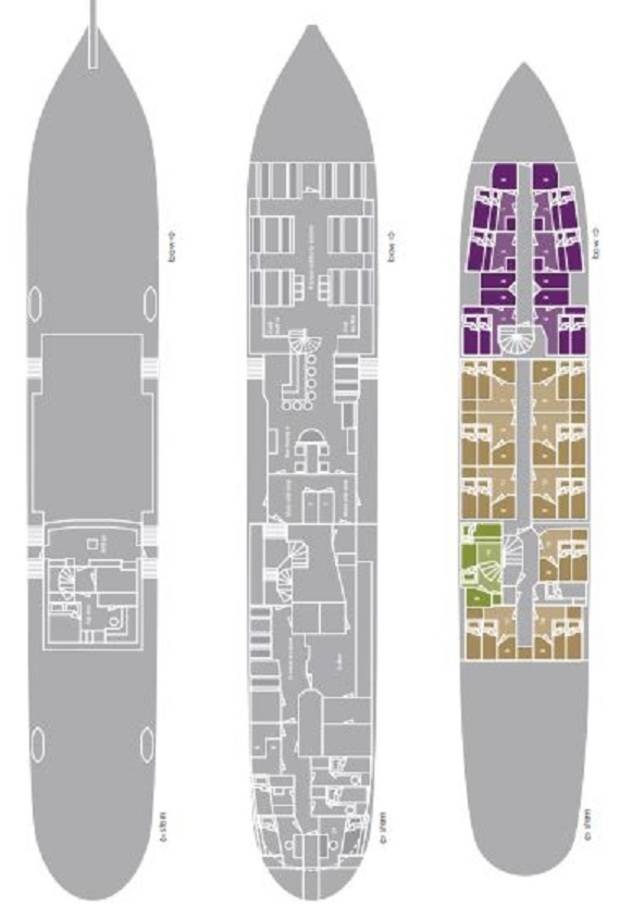
Specifications
- Registered: Vanuatu
- Length: 49.5 metres
- Breadth: 6.65 metres
- Draft: 2.8 metres
- Ice Class: Enforced bow
- Displacement: 435 tons
- Propulsion: 2 Cummins / 550KW
- Average cruising speed: 6.5 knots
- Passengers: 33 in 16 cabins
- Crew: 10 + 2 guides
- Refurbished: 2011
Whats included?
- Voyage aboard the indicated vessel as indicated in the itinerary
- All meals throughout the voyage aboard the ship including snacks, coffee and tea.
- All shore excursions and activities throughout the voyage by Zodiac.
- Program of lectures by noted naturalists and leadership by experienced expedition staff.
- Free use of snowshoes.
- Transfers and baggage handling between the airport, hotels and ship only for those passengers on the group flights to and from Longyearbyen.
- All miscellaneous service taxes and port charges throughout the programme.
- AECO fees and governmental taxes.
- Comprehensive pre-departure material.
What’s not included?
- Any airfare, whether on scheduled or charter flights
- Pre- and post- land arrangements.
- Passport and visa expenses.
- Government arrival and departure taxes.
- Meals ashore.
- Baggage, cancellation and personal insurance (which is strongly recommended).
- Excess baggage charges and all items of a personal nature such as laundry, bar, beverage charges and telecommunication charges.
- The customary gratuity at the end of the voyages for stewards and other service personnel aboard (guidelines will be provided).
Notes
PLEASE NOTE:
All itineraries are for guidance only. Programs may vary depending on local ice, weather, and wildlife conditions. Landings are subject to site availabilities, permissions, and environmental concerns per AECO regulations. Official sailing plans and landing slots are scheduled with AECO prior to the start of the season, but the expedition leader determines the final plan. Flexibility is paramount for expedition cruises, and willingness to compromise on comfort is a basic requirement on board a historic sailing vessel. Important information about the use of sails: The vessel is equipped with sails to be used in good conditions (based on open sea, water depth, wind, and time allowance), but the use of sails is not guaranteed. The captain decides whether to use the sails or the engine. If sails are used, the crew will operate them. Guests must follow the safety instructions of the team. The average cruising speed for s/v Rembrandt van Rijn is 6.5 knots.









